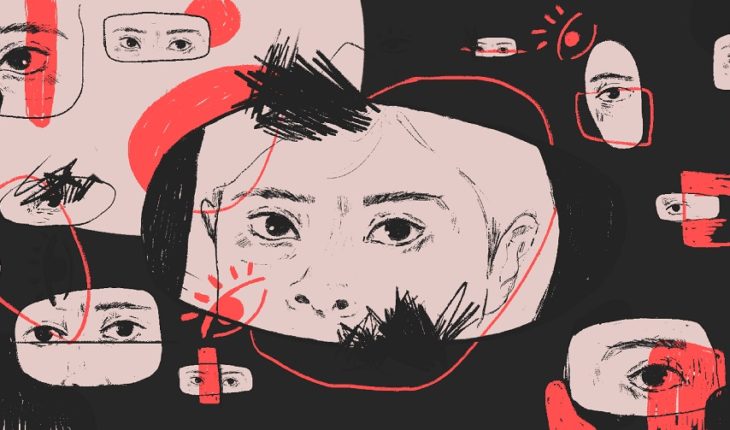In Mexico, only 238 orphans for femicide receive state care as victims of violence, although it is recognized that every year, in the last decade, there are at least 3,000 children whose mother was the victim of hate homicide.
The 238 orphaned minors are in 11 of the 32 entities: Michoacán (96), San Luis Potosí (64), Morelos (31), Coahuila (13), Jalisco (10), Chihuahua (9), Durango (6), Yucatan (5), Querétaro (2), Oaxaca (1) and Veracruz (1). They are the only states in the country that reported caring for orphans by femicide.
Eight other states—Baja California Sur, Guerrero, Puebla, Quintana Roo, Sinaloa, Sonora, Tabasco, and Tlaxcala—said they had zero cases. The rest, there’s no information.
Read more: Report to CNDH the abandonment of the government in cases of children who were orphaned by femicides
At the national level, there is also no registration. Just last July, the National Institute of Women (Inmujeres) announced that it will conduct a census to report in 2020 on the exact number of children orphaned by this crime. Its initial calculation indicates that, in the last eight months, there were 3,400 children, and that this is the annual trend, but there is no official figure.
Animal Político requested the State Commissions for the Care of Victims of Violence and each Comprehensive System for Family Development (DIF) in the entities the records of orphans victims of femicide, which have received care since 2012.
In no case is there any information since that year, as states began recording cases from 2015. They recognize that children who were orphaned by femicide before that year are not and will not be cared for as victims of violence.
In an interview for Political Animal, Gail Aguilar, holder of the Gender Unit of the Executive Committee on Victim Care (CEAV), explained that the absence of a national database and the disparity of cases between one entity and another is due to the lack of a law and force states to keep a record of children and adolescents orphaned by femicide.
Find out: Hidden state femicides committed by organized crime and does not investigate, accuse activists of 23 entities
In addition, Gail detailed that the General Law on Victims, which supports these minors under the figure of indirect victims, is a concurrent law. This means that each entity has the power to set its enforcement rules, decide how its commissions will work, and make the records they create relevant.
“Basically, each federal entity is marking its areas of competence according to its legislation, and that’s why every state body has a different way of carrying out this registration,” Gail added.
Invisible to the State
Carlos, Uriel and Fernanda were 5, 4 and 2 years old, respectively, when their father, Bernardo López, murdered his mother Nadia Alejandra Muciño on February 12, 2004, in the State of Mexico. Not only are they victims of the country’s phenomenal violence, they are also victims of the state that does not recognize them as such.
His grandmother Maria Antonia, Nadia’s mother, took care of them, paying for their education and psychological treatments. Since her mother was murdered 15 years ago, they have not received state support.
Only in 2013 the General Law on Victims was created and in 2014 the Executive Commission on Victim Care (CEAV) was formed, which was born to care for and support victims of a federal crime or violation of their human rights, so that they obtain “truth , justice and reparation of harm.”
In 2015, the Executive Secretariat of the National Public Security System (SESNSP) initiated an annual record of femicides. From January of that year to May 2019 they numbered 3 thousand 17 femicides and 9 thousand 892 women victims of murder.
The Inmujeres said last July that this SESNSP data has been used to make an initial estimate of the number of femicide orphans, who should receive state care.
You may be interested: Orphaned children of family and government: they get caught up in the legal bureaucracy
The institute made this calculation by multiplying the intentional and femicide killings of women between November 2018 and April 2019, by the birth rate, which according to INEGI data is 2.21 children per woman.
The Inmujeres told Political Animal that they will review the files of violent deaths of women in the aforementioned period, to generate a record of orphans with the data provided by the 32 prosecutors and prosecutors of the country, although that record will be only one Sample.
The results of this sample are expected to take place by May 2020.
In an interview, María de la Luz Estrada, director of the National Citizen Observatory of Femicide (OCNF), states that although it is not established in the General Law on Victims, the federal government should assume responsibility, through the CEAV, to carry out a national registration of orphans by femicide, in addition to fulfilling their obligation to follow up on a case-by-case basis to provide comprehensive redress to the victims’ relatives.
“Only through complaints such as those filed with the CNDH is that governments care for minors and their families (…) and from cases like this is that until now, only two states, Jalisco and State of Mexico, have implemented protocols for the care of these victims,” he says.
The director of the OCNF explains that while minors are not the only victims after femicide, they are the most vulnerable, as they see their family environment truncated and completely lose their emotional stability.
Broken and unsupported family environment
The lives of Carlos, Uriel and Fernanda changed radically that 12 February 2004. The three brothers witnessed their father Bernardo, with the help of Isidro, his brother, murder his mother. From that moment on, they lost everything.
Their family environment broke down and they had to leave the house where they lived to go with their grandmother, Maria Antonia, who at the time was also responsible for three children. At the time of Nadia’s murder, Carlos and Uriel were 5 and 4 years old, while Fernanda had turned just 2.
Bernardo and his brother Isidro fled after committing the crime. The murder investigation was riddled with irregularities.
Read more: #NoMeCuidanMeViolan: Women protest in states against violence and femicide
Although the Public Prosecution Service first argued that a suicide had been treated, the forensic medical opinion established that Nadia’s cause of death had been suffocating by hanging, and that her neck had a fracture for assault.
Maria attempted to deliver a letter to then-President Vicente Fox, to solicit support for her grandchildren and expedite the investigation. She was greeted by the former first lady, Martha Sahagún, who only gave her condolences and turned the case to the government of the State of Mexico.
The help offered at the time by the federal and state governments was insufficient, so Maria preferred to pay for health care and education for her three grandchildren, as well as hire a lawyer to help her with the investigation.
“They never offered me financial support for care or education, and while my grandchildren had a hard time,” Maria recounted.
One of them lost control of the sphincters, the other had nightmares and the youngest presented behavioral problems over time.
It was at least five years that Maria paid for psychological and psychiatric treatment for her three grandchildren, and at the same time was in charge of her education and covering the fees of the hired lawyers.
Mary had to borrow money as her salary as a dress embroiderer and her husband’s was not enough to cover all expenses.
Seeing that the governments of Vicente Fox and Felipe Calderón did not provide assistance, María contacted the National Citizen Observatory of Femicide (OCNF), which took the case.
The sentences against Bernardo and Isidro were for aggravated manslaughter, as the criminalization of femicide was given until 2011 and by law all cases that occurred before this year cannot be classified as this way.
In 2009, Isidro, the underworld’s uncle and accomplice of the murderer, received a 42-year sentence that he appealed. The judge did not accept the statements of the minors because they were “fantastic and unable to differentiate between truth and fantasy”.
Isidro was released and his whereabouts are unknown today.
The investigation continued and in 2012 —eight years after femicide—Bernardo was captured in Hidalgo state. Five years later he was finally sentenced to 42 years and 7 months in prison.
The fact that the crime was not criminalized as femicide allowed Bernardo to obtain a lesser sentence, which may have been up to 70 years.
Although the sentence was achieved for the murderer, Mary describes the actions of the authorities as “unpunished and shameful” because of the various omissions and irregularities.
Today Carlos is about to turn 21, is already a father and works as a cashier in a grocery store; Uriel is 19 years old, single and studies graphic design at the Autonomous University of the State of Mexico, and Fernanda is 17 years old, is the mother of a child, lives with her partner and studies high school online.
Mary continues to the slope of her three grandchildren and with impotence comments that her development may have been better if, after the loss of her mother, they had had the support of the State.
What we do in Animal Político requires professional journalists, teamwork, dialogue with readers and something very important: independence. You can help us keep going. Be part of the team.
Subscribe to Animal Politician, receive benefits and support free journalism.#YoSoyAnimal





